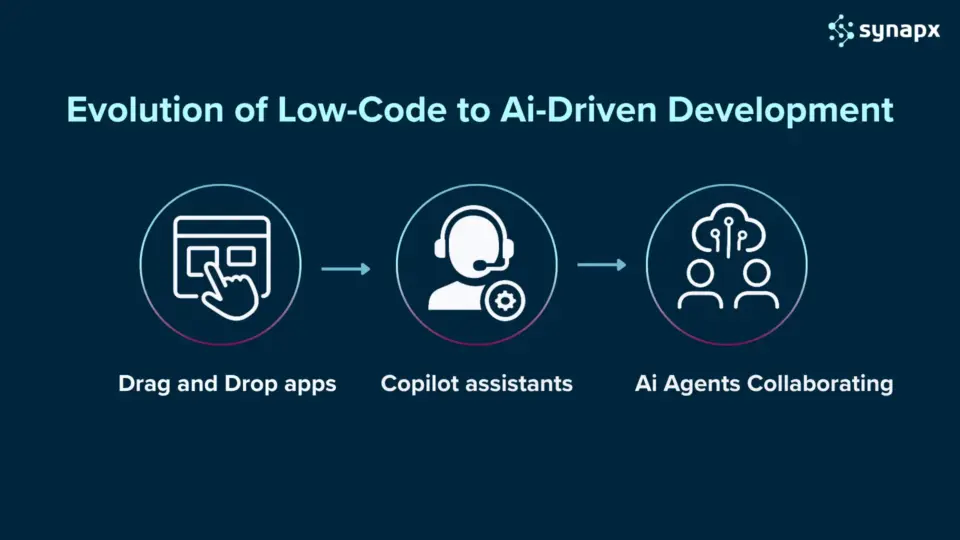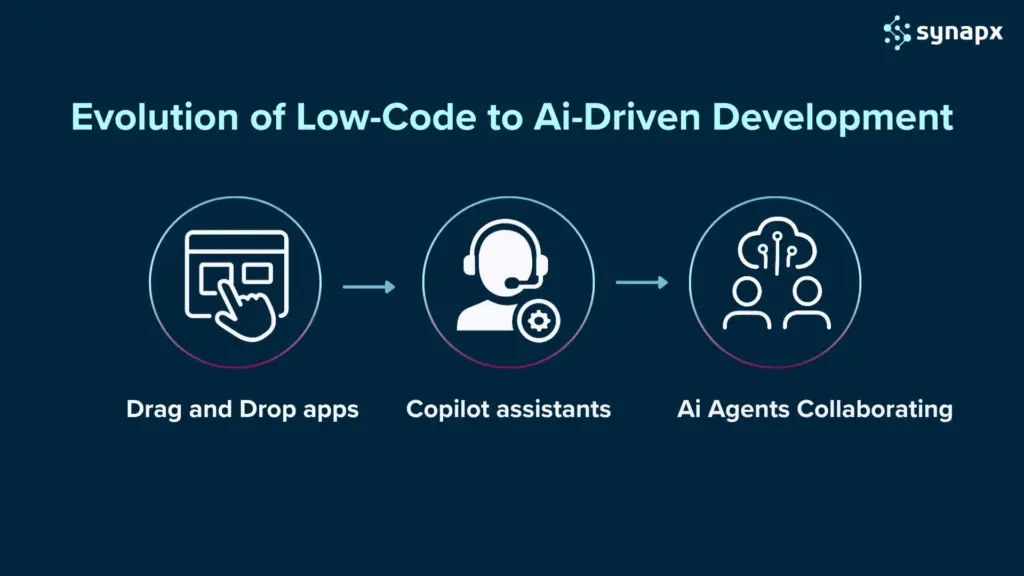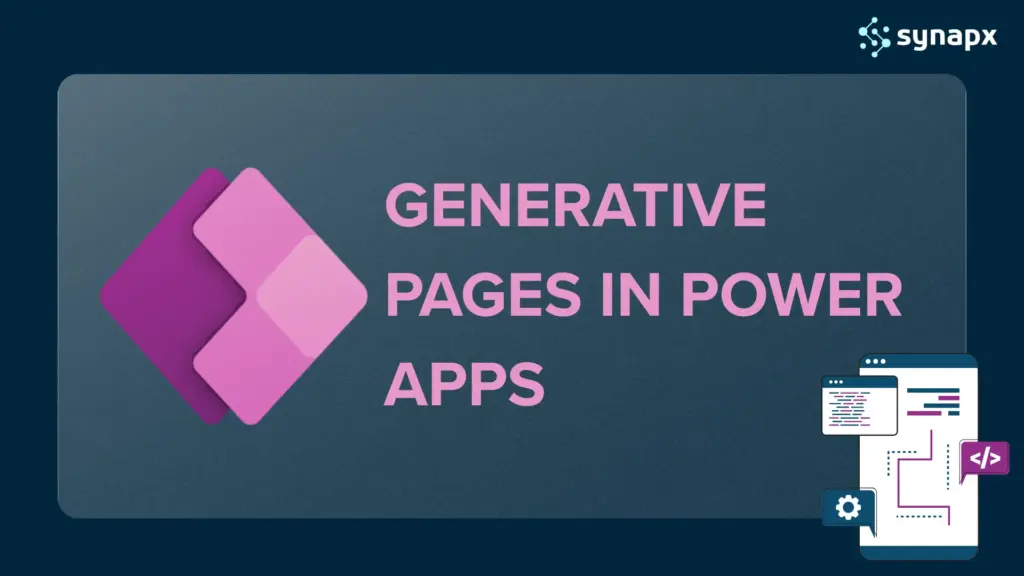It was a bold declaration at the Power Platform Community Conference 2025 in Las Vegas, delivered by Charles Lamanna: “Low code as we know it is dead.”
For many, this may have sounded like the end of an era. But in truth, it marks the beginning of something far more exciting – a transformation that’s reshaping how we build, innovate and deliver digital solutions.
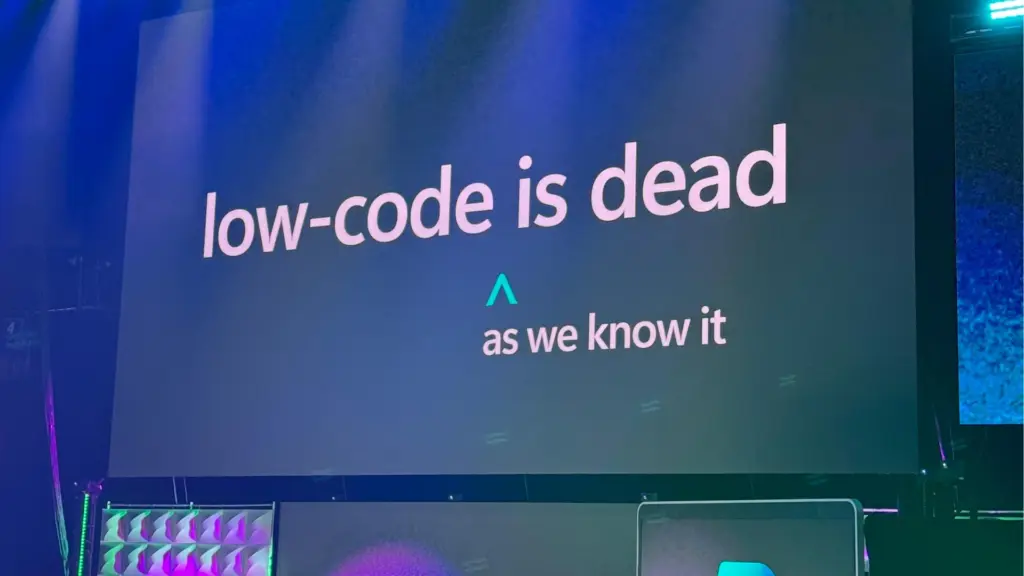
What is AI-driven development?
AI-driven development is the next evolution of low-code, where intelligent agents, copilots, and natural language replace manual drag-and-drop tools, allowing businesses to build, automate, and innovate faster than ever.
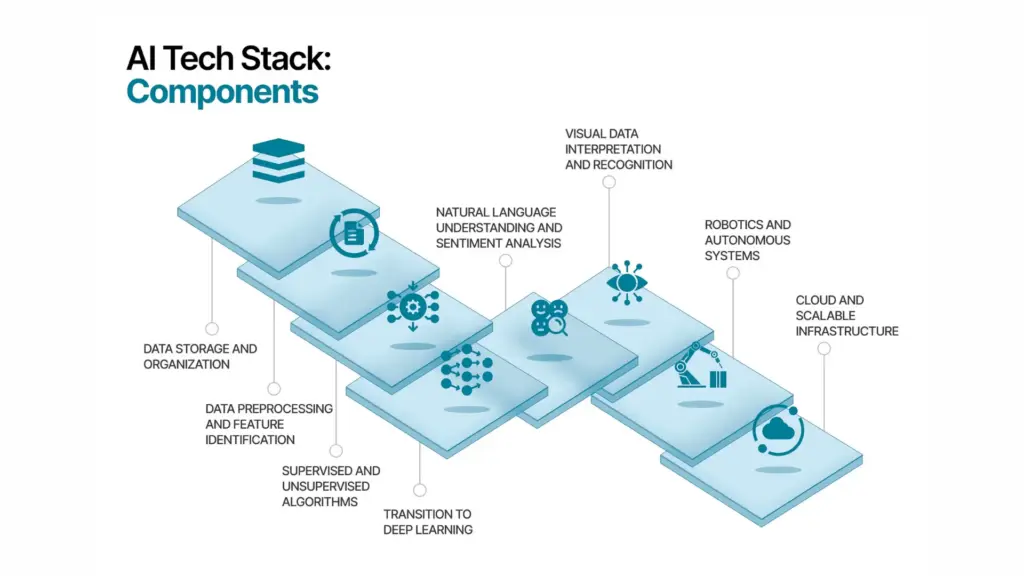
What’s Really Changing?
Let’s be clear: low-code isn’t going away. It’s evolving. The tools, interfaces and expectations are shifting. What was once a world of drag-and-drop components and formula-based logic is now becoming a landscape of natural language, intelligent agents and AI-powered copilots.
For years, the Microsoft Power Platform stood for speed, simplicity and accessibility. It empowered developers and business users alike to create apps and automations without deep technical expertise. That core value remains. But now, we’re entering a new phase where AI is the co-creator, and intent is the new syntax.
The Rise of Natural Language + Agents
We’re seeing the rise of Copilot Studio, Microsoft Cloud Platform (MCP), and agentic workflows. Tools that allow us to describe what we want in plain language and let intelligent systems build it. This is what some are calling vibe coding, designing solutions based on business context, emotion, and desired outcomes, rather than rigid technical specifications.
Now, do I believe that LLMs and agents fully understand clients and requirements the way experienced consultants do? Not yet. There’s still a gap between human intuition and machine interpretation. But the direction is clear. These tools are learning fast, and they’re already accelerating development in ways we couldn’t have imagined a few years ago.
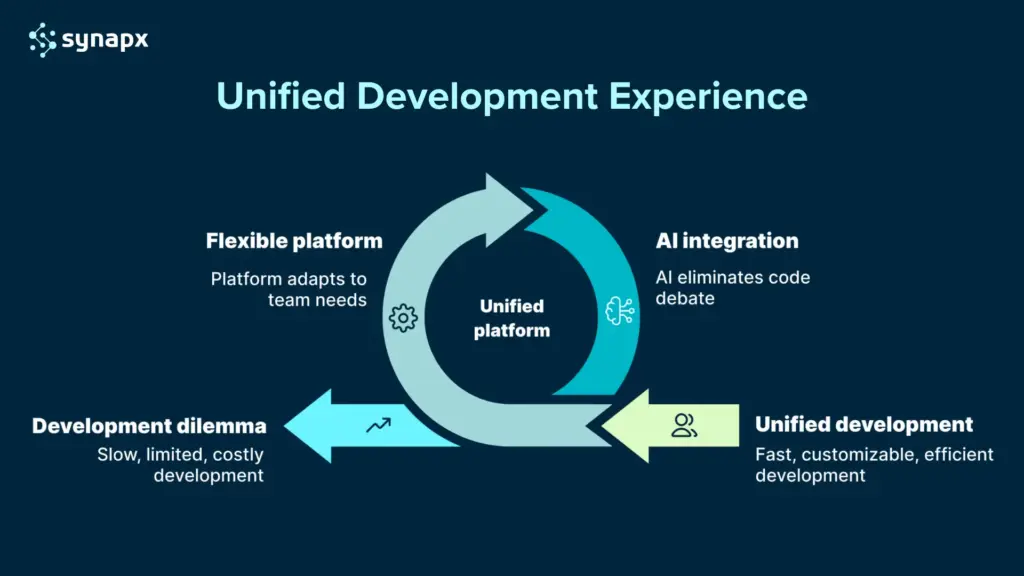
Why This Matters for Developers and Businesses?
For Developers
- This shift is both a challenge and an opportunity.
- The role isn’t just “builder” anymore; it’s “solution-designer”, “AI-collaborator”.
- You’ll still need technical skills, but you’ll also be guiding AI, architecting agent-led workflows and focusing more on integrations, end-to-end architecture, user experience and governance.
For Businesses
- Faster time to value. Teams can build internal tools, dashboards, and calculators in minutes instead of weeks.
- Reduced dependency on large development cycles and heavy pro-dev resourcing.
- The apps are grounded in the Microsoft 365 context (Word, Excel, Teams, SharePoint), so they are more secure, governed and enterprise-ready.
- But it also means rethinking how digital transformation is approached. Are you building for today or tomorrow?
At Synapx, we’re not just watching this transformation; we’re leading it. We’ve always believed in the power of low-code, and now we’re embracing its evolution. We help businesses navigate the AI transition, design agentic solutions, and build digital capabilities that last.
We’re working with clients to rethink their app strategies, reduce reliance on traditional flows and canvas apps, and explore how agents can drive business logic and user interaction. We’re training teams to work with Copilot Studio, and we’re building solutions that are not only functional but future ready. We’re working in partnership with iwantmore.ai to help customers on their AI journey.
| Traditional Low-Code | The New Era |
| Drag & drop UI builders, formula logic, connectors | Natural language prompts, AI agents, intent-driven workflows |
| Business user or citizen-developer builds simple apps | Hybrid teams (business + dev + AI orchestration) build scalable, enterprise-grade systems |
| Visual toolsets, often with limited customisation | Full code-generation or AI-augmented code foundations (e.g., React in Power Platform) |
| Longer development loops for more complex logic | Rapid prototyping with AI, freeing developers for complex tasks |
| Low-code = “simplified dev” | Low-code becomes “AI-augmented dev” — the baseline shifts |
The Power Platform has been reborn. It’s no longer just a toolkit; it’s an intelligent ecosystem. With natural language interfaces, embedded copilots, and agentic design patterns, it’s becoming the operating system for business transformation. So yes, low-code as we knew it is dead. But what’s emerging is more powerful, more intuitive, and more aligned with the future of digital innovation.

Example: App Builder in Microsoft 365 Copilot
The App Builder agent is a new capability within Microsoft 365 Copilot that allows users to create fully functional business applications using natural language prompts, no coding required. It’s designed to democratise app creation, making it accessible to anyone in an organisation, not just developers. You simply describe what you need, for example, “I want a dashboard to track campaign milestones”, and App Builder generates the app, complete with a user interface, data schema, and security model.
Why It Matters in the New Low-Code Landscape?
This agent represents a fundamental shift in how apps are built. Traditionally, even low-code platforms required some level of technical understanding: formulas, connectors, UI design. Now, with App Builder, the interface is conversational. You talk to Copilot, and it builds the app for you. You refine it through multi-turn interactions, preview changes instantly, and share it like a document link. This aligns perfectly with the idea that low code, as we knew it, is dead. The future isn’t just about simplifying development; it’s about redefining it entirely. App Builder is part of this rebirth, where natural language becomes the new development language, and agents become the new developers.
How Synapx Can Help?
At Synapx, we’re not just watching this shift – we’re leading it. We believe in the power of low-code, and now we’re embracing its evolution. We help businesses:
- Navigate the AI transition
- Design agentic solutions
- Build digital capabilities that last
With our expertise, we guide clients in rethinking their app strategies, reducing reliance on legacy flows and canvas apps, and embracing the new agentic architecture. We train teams on Copilot Studio, collaborate with partners such as Iwantmore.ai to help customers on their AI journey, and ensure solutions are future ready.
Conclusion
Yes, low code as we knew it is dead. But what’s emerging is far more powerful, intuitive, and aligned with the future of digital innovation. The Power Platform has been reborn. It’s no longer just a toolkit; it’s an intelligent ecosystem. With natural language interfaces, embedded copilots and agentic design patterns, it’s becoming the operating system for business transformation.
Ready to build future-proof solutions? Let’s talk about how Synapx can help your business embrace the new era of AI-powered development.
